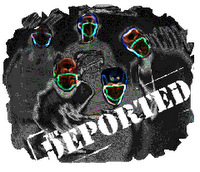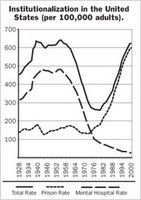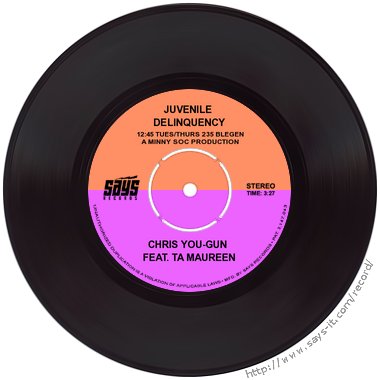 my biggest fear as an instructor — the one that summons the late-night howling fantods — is that i will somehow manage to teach students nothing they can take beyond the classroom. i confronted this fear directly last month at the conclusion of my sociology of deviance class. as a two-point bonus question on my final exam, i asked students for a specific example showing how they used course materials outside of my class during the semester.
my biggest fear as an instructor — the one that summons the late-night howling fantods — is that i will somehow manage to teach students nothing they can take beyond the classroom. i confronted this fear directly last month at the conclusion of my sociology of deviance class. as a two-point bonus question on my final exam, i asked students for a specific example showing how they used course materials outside of my class during the semester.
i teach from
two competing logics in the course. first, i try to give them a durkheimian sociological realism, emphasizing social facts and the methods we use to obtain them. second, i employ a constructionist emphasis on labels, power, rulemaking, and careers in deviance. it was cool to see students employ both logics in their answers:
“My boyfriend is in prison and I am constantly asking him about things I learned in class, such as excuses and justifications of rapists, how prison culture convinces people to re-offend, stigmas of certain inmates such as child molesters, intense homophobia in the inmate population, etc. I have used course materials to sociologically analyze his ‘deviance’ and how he will manage the stigma and escape the deviant label once his is reintegrated into society.”
“I constantly seem to be having discussion about gay marriage and the current raging debate. On a society level, I believe that GLBT lifestyles are seen as deviant, but I think that we are starting to see a definite stratification of acceptance based on generation. In these discussions, I always try to show people the construction of deviance, and how any group can decide that an action is deviant, but that deviance and deviant label actions change over time.”
“We watched ‘The Woodsmen’ around the same time we were studying sexual variants and abuse in Abnormal Psychology. I am a Psych major so it’s always interesting look[ing] at the same behavior at the individual level psychologically and then in the larger social context, sociologically.”
“My boyfriend was flipping through one of my Cosmopolitan magazines one day when he saw an article about the dangers of men in groups. He didn’t really get it, and I explained about how I just read about how guys in frats will sometimes use alcohol as a weapon and cover up any wrong doing through ‘brotherhood.’ I told him about the Martin and Hummer reading and group-level processes.”
“I would say the biggest thing I took away was sharing my deviant identity paper with my family.”
“I am currently taking social statistics as well, and that class is all about statistical relationships. When we discussed correlates, not as a cause, but as a statistically significant relationship, I could relate the two classes together.”
“This class has provided me with endless conversation at the bar and with my friends. Specifically, we discussed the topics of moral panics and drug scares over a few brews just last weekend. I feel I’ve learned a lot in this class and can ‘hold my own’ in a debate that’s relevant now. Thanks!”
“Just this morning I was telling my partner I was surprised that the 1914 Harrison Act of scheduling drug categories occurred that early. He was amazed too.”
“As a bartender, I witnessed many of this semester’s themes first hand. Saw Hirschi’s theory of self control and alcoholism intersect. I saw the negative stigma associated with alcoholism in full affect and its effect on jobs. I also witnessed techniques of neutralization and vocabularies of motive contribute to deviance in many sphere of social life. These theories helped me identify problems with others and problems with myself.”
“At the Juvenile Detention Center I talked to a young man about what it meant to him to be called juvenile sexual perpetrator. We had a long conversation about his experiences in the JDC with staff because of his crime (rape). He felt that women staff wouldn’t talk to him and only saw him as his crime (master status). I asked him what that label meant to him.”
“I used this material outside of class with regard to my good deeds paper. Even after I turned in my paper, I still tried to do acts of kindness. I attempt to give money to homeless when before I hadn’t.”
“I used the knowledge on suicide in discussion with coworkers to tell them who killed themselves the most, what countries and to bust the myth about how people think suicide rates go up around the holidays”
“I used Merton’s anomie theory to try to justify my piracy of movies on the internet. I told my mom that our society has placed universal goals that we should live in comfort. I also told her that certain people are not advantaged, so they resort to crime to achieve such goals. I said that I am a broke college student so I am considered to be disadvantaged. She still said I was wrong, but she watched the movies with me anyways.”
“I have actually used course material from this great course numerous times in speaking about people that like to dig up ‘hot’ corpses, to asphyxiation, to labeling theory, as in at work as we detained a young man screaming, ‘I’m a down ass gangsta.’ I remarked how he had labeled himself as such from differential association and his subculture.”
“My husband and I always debate theories regarding entry into drug dealing (he went ‘away’ for four years for cocaine dealing) and I’d tell him about your research on ex-cons and voting. “
“Applying the movie ‘Fight Club’ to a talk with a female friend, I was able to convince her that males were running out of all male masculinity spheres of behavior through which we can interact solely with other males, with the inclusion of women into the work force and equality of positions of authority, male dominance in the social are under attack. Femininity is leaking into masculinity diluting male championed ideals, leaving them frustrated with no avenues of self expression is the modern world. For Merton, males experience strain with the rational and the feminine.”
“I was having a debate with a friend about how prevalent the GLB commentary is in the U.S. She stated the statistic, ‘1 in 3 people are in the GLB community.’ I stated the NHSL survey and the statistics about how low the reporting actually is. We contributed the reporting to either harassment of just a fear of ‘outing’ themselves.”
“Oddly enough, I talk about this class a lot with friends, and when eating with my family. The most recent tie I made with class and discussions was with my girlfriend. She is at the U of M with a rowing scholarship and is from Lithuania. We talked both about women’s sports and the high suicide rates in her country. She was able to give me insight into both areas.”
“Just last night I was talking to my friend about deviance in terms of careers or a process. I explained mostly about drug trafficking and how its exit can be difficult. We talked about the movie, ‘Blow,’ referring to entertainment as a common ground we could both relate to. ”
“I actually use the terms often at work as a mall security guard. For example, last week I was trying to explain why a few kids couldn’t throw things at each other. I remember telling them that [they] couldn’t throw things at other people. They said there were no rules against it. So I told them their actions are deviant and they are violating the norms of the mall. They honestly had no clue what I meant, but at least they couldn’t keep arguing with me and felt like I outsmarted them.”
“When my sister discovered I was taking a class titled, ‘Deviant Behavior,’ she immediately responded, ‘I’m not deviant!’ I immediately corrected her telling her we are all deviants in some way. Deviance, I told her, is a violation of social norms and anytime she or I violated any norm we are deviants … the overall point is we all are, have been, and will continue to be deviants even if it is as simple as bringing a caffeinated soda into church (a Mormon church) as my sister has done.”
“I volunteer at Ramsey County Jail with the women, and help lead a chemical dependency relapse prevention class. I took a lot from this class and applied it to my work there. For instance, many are in for prostitution and it was very helpful for me to view them as victims/survivors of domestic abuse.”
“In a discussion about if viewing porn is o.k. for boyfriends/girlfriends in a relationship, I was able to talk about statistics of male/female[s] who view it, and how changing norms or sex are on the rise. Ex: more premarital sex and how it’s not as deviant.”
“Near the beginning of the semester I was discussing (or explaining) the labeling theory to my friend. We likened it to the label of him by his friends as an alcoholic/party animal. This label, we discussed, reinforces and encouraged his behavior as such, and even though he has acquired a lifestyle slightly less extreme, he is often enticed and/or expected by them to live up to (or down to depending how you look at it) that standard of behavior.”
“I used several statistics from this class like the Devah Pager study on race and employment as a ‘staggering sociological statistic,’ opener for my students in the lab section of SOC1001 I T.A.ed this fall.”
“What I took from this course the labeling theory that I was able to explain to my parents. You see, the Hmong community lives on reputation and labeling is very common. I sat down and had a conversation, relating to my brother’s deviant actions, about how labeling a person will actually enforce him/her to do more deviant acts. Instead, encourage the person to get out of those deviant acts and do good.”
“I avidly participate in local police ride-alongs and I brought up the topic of labeling theory to an officer. Ummmm yeah didn’t go over very well, he is a racist-XXXX and basically said that just because you ‘step in your own XXXX doesn’t give you an excuse to wipe it off on society’s doormat.’ No really, he said it! Needless to say the conversation was a hostile one and I hope he changes professions.”
“Last weekend I had a discussion with my friends about binge drinking. I told them that binge drinking was defined as 5 or more drinks in one occasion. They thought this was a very low number and I told them that [this] was because they were binge drinkers. If they thought they had enough alcohol after 2 drinks, then they would consider 5 to be binge drinking. However, since 5 drinks is a norm, we would say that 10 drinks in one occasion was binge drinking.”
“This morning actually, my brother’s girlfriend was talking about a girl who committed
suicide. I asked how, and came to find out that she tried overdosing a couple times before she ended up strangling herself. I told my brother’s girlfriend that girls usually attempt more suicides than complete them because of what they do. Males complete more of suicides because of the majority of them using
firearms.”
i was a bit surprised by the diversity in the responses. students didn’t simply parrot back my pet concepts or findings, but seemed to employ some course materials when situations presented themselves in their other classes, their jobs, or socializing with families or friends. i’ll definitely use such a question again.
 when people plead guilty to felonies, they are typically thinking about whether, where, and for how long they will be doing time. most probably know that they will lose other rights and statuses, but they may not realize that the plea can lead to their deportation.
when people plead guilty to felonies, they are typically thinking about whether, where, and for how long they will be doing time. most probably know that they will lose other rights and statuses, but they may not realize that the plea can lead to their deportation.
 bernard harcourt
bernard harcourt





